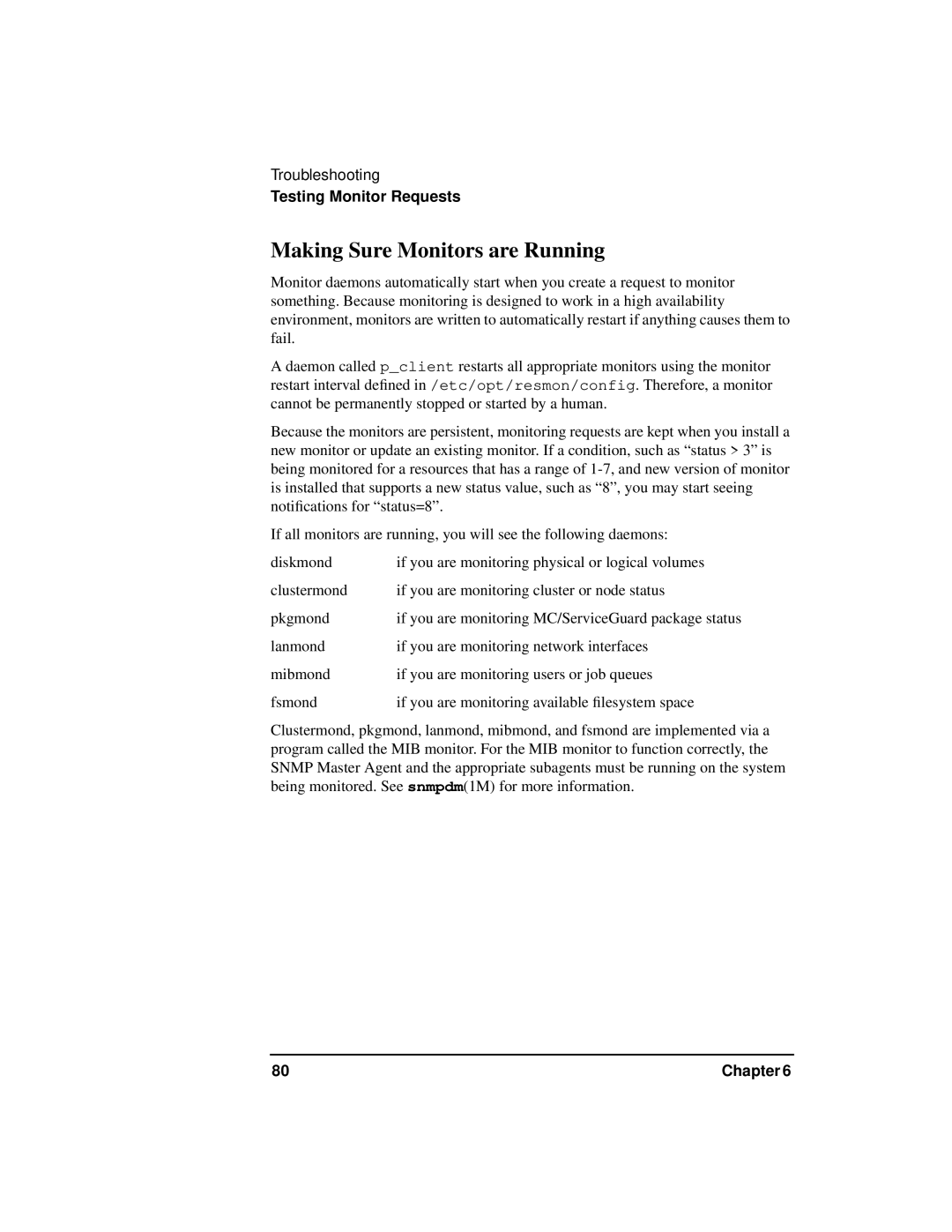Troubleshooting
Testing Monitor Requests
Making Sure Monitors are Running
Monitor daemons automatically start when you create a request to monitor something. Because monitoring is designed to work in a high availability environment, monitors are written to automatically restart if anything causes them to fail.
A daemon called p_client restarts all appropriate monitors using the monitor restart interval defined in /etc/opt/resmon/config. Therefore, a monitor cannot be permanently stopped or started by a human.
Because the monitors are persistent, monitoring requests are kept when you install a new monitor or update an existing monitor. If a condition, such as “status > 3” is being monitored for a resources that has a range of
If all monitors are running, you will see the following daemons:
diskmond | if you are monitoring physical or logical volumes |
clustermond | if you are monitoring cluster or node status |
pkgmond | if you are monitoring MC/ServiceGuard package status |
lanmond | if you are monitoring network interfaces |
mibmond | if you are monitoring users or job queues |
fsmond | if you are monitoring available filesystem space |
Clustermond, pkgmond, lanmond, mibmond, and fsmond are implemented via a program called the MIB monitor. For the MIB monitor to function correctly, the SNMP Master Agent and the appropriate subagents must be running on the system being monitored. See snmpdm(1M) for more information.
80 | Chapter 6 |
